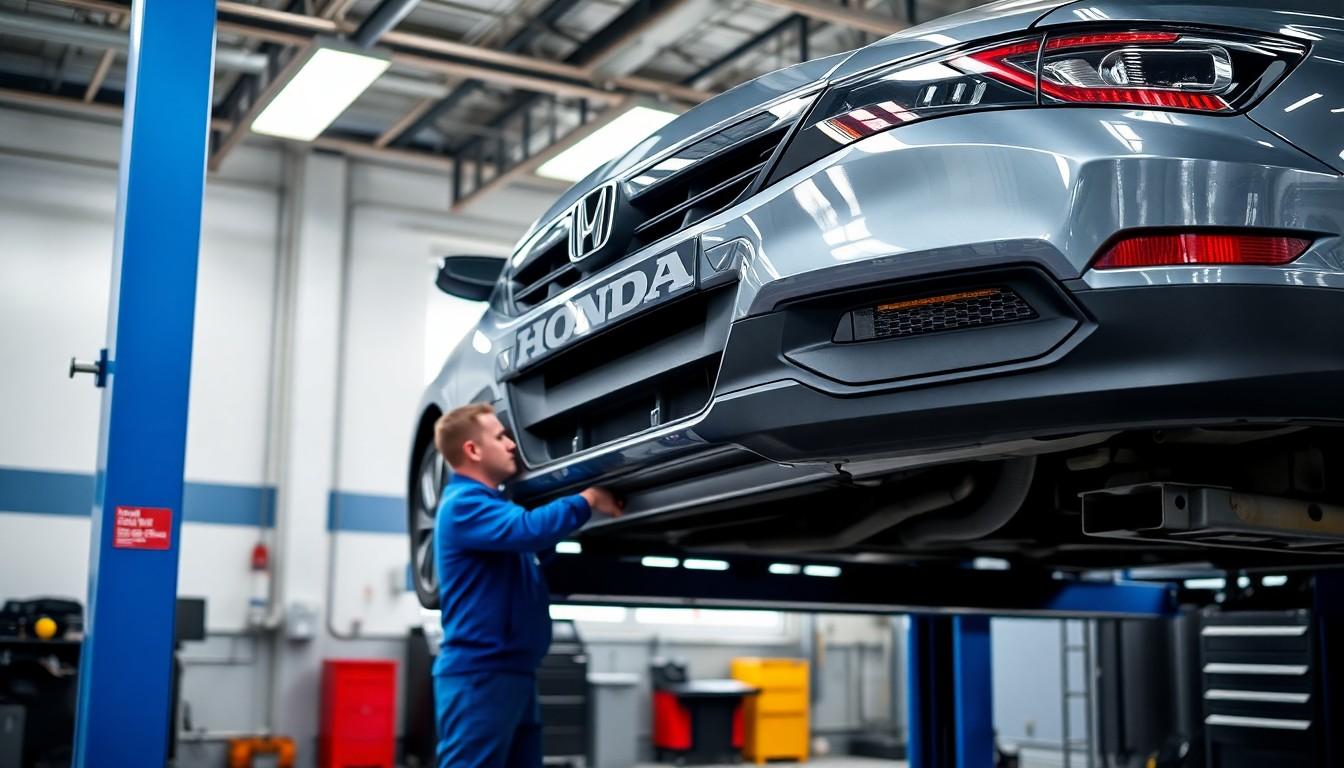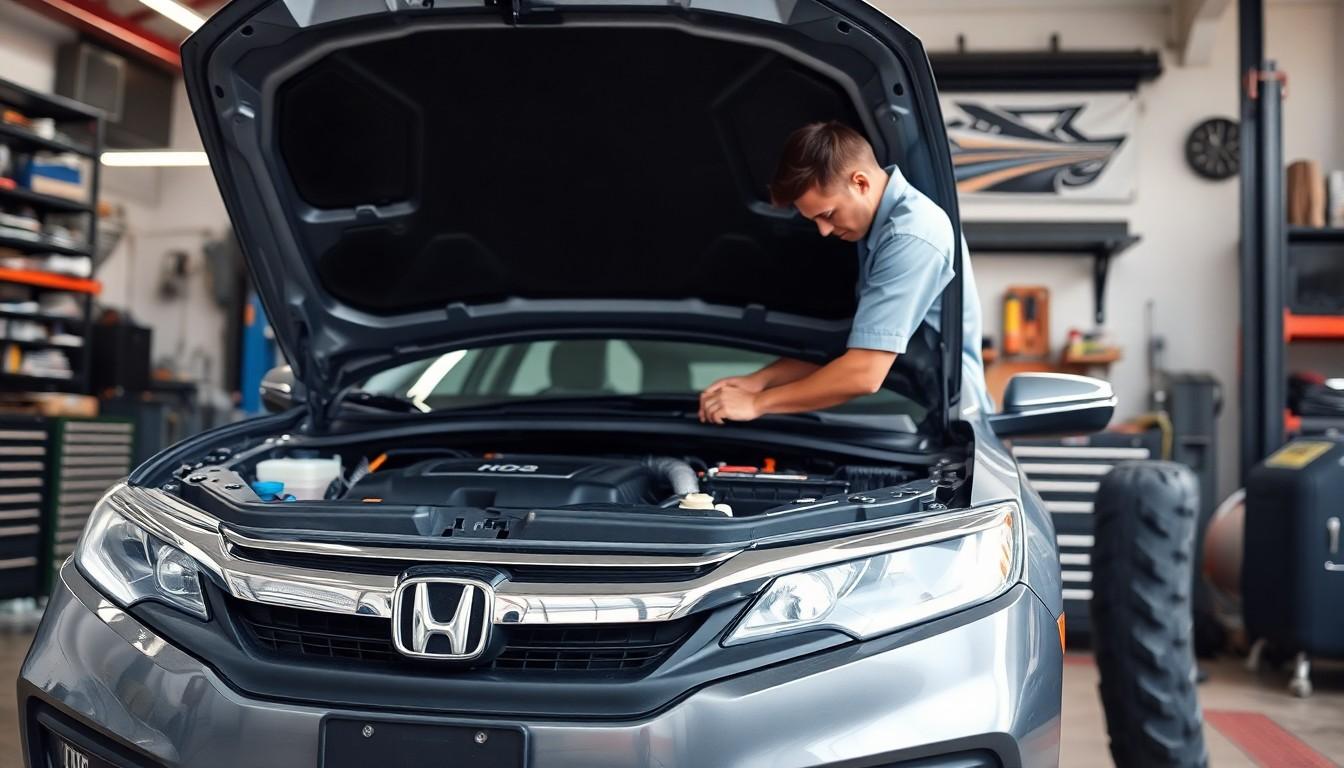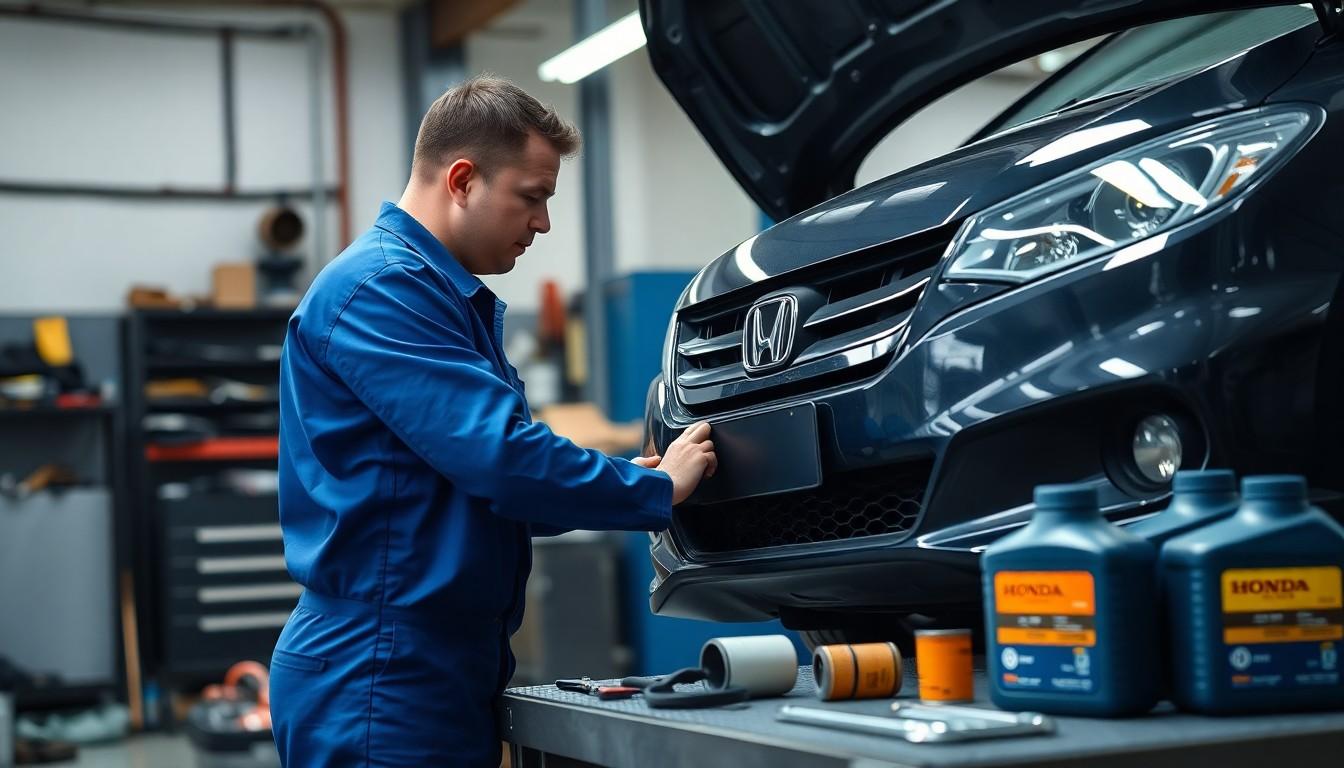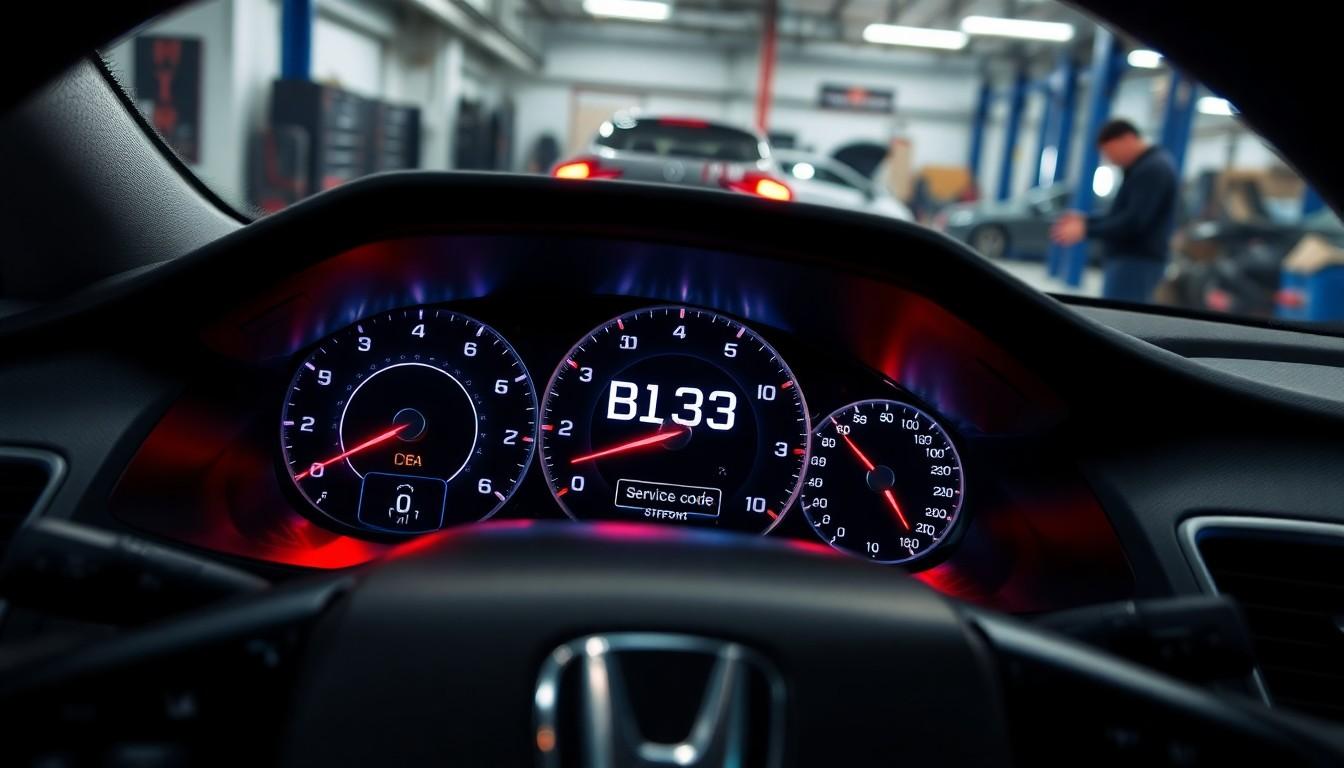Ever noticed that mysterious “B123” code on your Honda’s maintenance reminder and wondered what it means? You’re not alone. This service code is Honda’s way of telling you it’s time for some exact maintenance tasks to keep your vehicle running smoothly.
We’ve helped thousands of Honda owners decode these maintenance mysteries, and today we’ll break down exactly what the B123 service code means for your vehicle. Understanding these codes isn’t just about clearing that annoying dashboard light—it’s about protecting your investment and ensuring optimal performance for years to come.
Understanding Honda’s B123 Service Code
Honda’s B123 service code represents a exact combination of maintenance tasks your vehicle needs. This alphanumeric code appears on your maintenance minder system when certain service intervals are due. Each character in the code (B1, B2, and 3) corresponds to different maintenance requirements that should be addressed together.
The “B” in the code indicates it’s time for an oil change plus additional mechanical inspections. All B-type services include oil and filter replacement along with a comprehensive multi-point inspection of your Honda’s vital systems. These inspections cover brake components, suspension parts, fluid levels, and various mechanical systems to ensure everything’s functioning properly.
The “1” component specifically calls for tire rotation and balance. Regular tire rotation extends tire life by promoting even wear across all four tires. This service helps maintain optimal handling, improves fuel efficiency, and ensures consistent performance from your tires.
The “2” indicates it’s time to replace your air cleaner element, check drive belt tension, and replace the dust and pollen filter. These components affect both engine performance and cabin air quality. A clean air filter allows your engine to breathe properly, while fresh cabin filters ensure you’re breathing clean air inside the vehicle.
The “3” in the code signals the need to replace transmission fluid and transfer case fluid (if applicable). Fresh transmission fluid helps protect the internal components of your transmission system, ensuring smooth shifting and preventing premature wear of expensive components.
Honda’s maintenance minder system calculates these service intervals based on your actual driving habits rather than arbitrary mileage points. The system tracks engine revolutions, operating temperatures, and other factors to determine when maintenance is truly needed. This approach often results in fewer service visits while still protecting your vehicle properly.
What Does the B123 Service Code Include?

The Honda B123 service code contains exact maintenance tasks that your vehicle requires. This comprehensive code combines multiple service indicators, each representing different maintenance needs for your Honda.
B Service Components Explained
The “B” portion of the service code indicates a series of essential inspections that need to be performed. These inspections cover critical safety components including brake system checks, wiper blade examination, light functionality tests, and thorough inspections of other vital vehicle systems. Honda technicians typically evaluate fluid levels, hoses, and connections during this part of the service to ensure everything operates correctly.
1 Service Component Breakdown
The “1” in the B123 code specifically calls for an engine oil and filter change. Fresh engine oil provides proper lubrication to moving engine parts, reducing friction and preventing premature wear. This fundamental maintenance task helps maintain optimal engine performance and extends the overall lifespan of your Honda’s engine by removing contaminants that accumulate during normal operation.
2 Service Component Breakdown
Tire rotation forms the core of the “2” service component. When Honda’s maintenance system displays this indicator, it’s time to have your tires rotated to promote even wear patterns across all four tires. Even tire wear not only extends tire life but also helps maintain balanced handling, traction, and fuel efficiency. Most Honda service centers follow manufacturer-exact rotation patterns designed for your particular model.
3 Service Component Breakdown
The “3” in the service code signals that your Honda requires transmission fluid replacement. This crucial maintenance item keeps your transmission system properly cooled and protected. In some Honda models, particularly those with all-wheel drive systems, the “3” service might also include replacing transfer case fluid. Fresh transmission fluid ensures smooth gear shifts and protects expensive transmission components from excessive heat and friction damage.
When Is B123 Service Typically Required?

The B123 service is triggered by Honda’s Maintenance Minder system based on your exact driving habits and vehicle conditions. This intelligent system monitors various factors to determine when maintenance is necessary rather than relying solely on fixed schedules.
Mileage Intervals
Honda’s B123 service typically appears around the 30,000 to 45,000 mile mark for most vehicle models. Different Honda vehicles may have varying intervals depending on their exact engineering requirements and components. The Maintenance Minder calculates these intervals using algorithms that account for engine revolutions, operating temperatures, and driving conditions rather than simply counting miles. Your driving style significantly impacts when this service code appears – highway drivers might see longer intervals than those who primarily drive in stop-and-go city traffic.
Time-Based Recommendations
Even if you haven’t reached the typical mileage threshold, your Honda might still display the B123 service code based on elapsed time. The system recognizes that certain maintenance items like fluid changes become necessary after exact time periods regardless of miles driven. For example, transmission fluid can degrade over time even in vehicles driven infrequently. Honda’s system generally factors in time periods of approximately one year when calculating service needs. Vehicles that sit unused for extended periods or are driven only short distances may receive maintenance reminders based primarily on these time calculations rather than accumulated mileage.
DIY vs. Professional B123 Service

Honda owners have two options when the B123 service code appears on their dashboard: tackle it themselves or visit a professional mechanic. Each approach offers distinct advantages and challenges depending on your mechanical aptitude, available time, and budget considerations.
DIY
DIY maintenance provides important cost savings compared to dealership service prices. Honda owners with basic mechanical skills can complete most B123 service tasks at home with the right tools and parts.
Pros:
- Save $200-400 compared to dealership prices
- Gain intimate knowledge of your vehicle’s condition
- Complete tasks at your own pace and schedule
- Use OEM or aftermarket parts based on preference
Cons:
- Requires special tools for certain procedures
- Takes 3-5 hours for inexperienced DIYers
- No warranty protection on your work
- Disposal of used fluids requires proper handling
Professional
Professional B123 service ensures factory-trained technicians handle your Honda maintenance using manufacturer-approved methods and parts.
Pros:
- Technicians have model-exact expertise
- Service includes warranty on parts and labor
- Complete documentation for vehicle history
- Access to specialized diagnostic equipment
- No need to dispose of hazardous materials
Cons:
- Costs $300-600 depending on model and location
- Requires scheduling and transportation arrangements
- May include suggested additional services
- Longer wait times during busy periods
Tools and Parts Needed
DIY Honda B123 service requires exact tools and parts to complete all required maintenance items properly. Having everything prepared before starting saves time and prevents mid-project interruptions.
Required Tools:
- Oil filter wrench (sized for your Honda model)
- Torque wrench for proper bolt tightening
- Socket set with various extensions
- Floor jack and jack stands rated for your vehicle weight
- Drain pan with at least 5-quart capacity
- Funnel for fluid refills
- Tire pressure gauge
Required Parts:
- 4-5 quarts of Honda-recommended engine oil
- Genuine Honda oil filter or high-quality equivalent
- Air filter element exact to your model
- Cabin (pollen) filter
- 3-4 quarts of Honda transmission fluid (DW-1 for most models)
- New crush washers for drain plugs
Step-by-Step DIY Process
Completing a Honda B123 service involves several distinct maintenance procedures that must be performed correctly to ensure your vehicle operates reliably.
Engine Oil and Filter Change:
- Run engine for 5 minutes to warm oil
- Position drain pan under oil pan
- Remove oil filler cap and drain plug
- Allow oil to drain completely (15-20 minutes)
- Replace drain plug with new washer
- Remove old oil filter and install new one
- Add fresh oil to proper level
- Start engine to check for leaks
Tire Rotation:
- Loosen lug nuts before lifting vehicle
- Raise one corner at a time with jack
- Support vehicle with jack stands
- Remove wheels and rotate according to pattern (typically front-to-rear crossover)
- Torque lug nuts to specification (usually 80-100 ft-lbs)
- Check and adjust tire pressure
Air and Cabin Filter Replacement:
- Locate air filter box under hood (typically near intake)
- Release retaining clips or screws
- Remove old filter and clean housing
- Install new air filter and secure housing
- Access cabin filter (often behind glove box)
- Remove cover panel and old filter
- Insert new cabin filter with airflow arrows correctly oriented
- Reattach access panel
Transmission Fluid Replacement:
- Locate transmission drain plug
- Position drain pan and remove plug
- Allow fluid to drain completely
- Replace drain plug with new washer
- Fill transmission with Honda DW-1 fluid
- Check level using dipstick or fill hole procedure
- Test drive and recheck fluid level
Each procedure contributes to your Honda’s longevity and performance, making the B123 service an important maintenance milestone whether completed at home or by professionals.
Cost of Honda B123 Service

The cost of a Honda B123 service varies significantly depending on where you get it done and your exact vehicle model. Price differences between service providers can impact your budget planning for this essential maintenance.
Dealership vs. Independent Shop Pricing
Dealership service centers typically charge between $200 and $400 for a complete B123 service package. This price includes all the required maintenance items: engine oil replacement, tire rotation, air and cabin filter replacements, and transmission fluid service. Honda dealerships use OEM (Original Equipment Manufacturer) parts and factory-trained technicians, which contributes to their higher pricing structure.
Independent automotive shops generally offer more competitive rates compared to dealerships. Many Honda owners report saving 15-30% by choosing independent mechanics for their B123 service. These savings come without necessarily compromising on service quality, as many independent shops specialize in Honda vehicles and use comparable parts. The exact price at independent shops depends on their labor rates and parts markup, which vary by location and shop reputation.
When comparing service options, it’s worth noting that dealerships often include complimentary multi-point inspections and sometimes provide loaner vehicles or shuttle services. Independent shops might offer more flexible scheduling and personalized service. Your decision eventually depends on your warranty status, budget constraints, and personal preferences about vehicle maintenance.
Benefits of Timely B123 Service Maintenance

Regular maintenance according to the Honda B123 service code delivers important benefits that extend beyond simply clearing the maintenance reminder light. Engine performance and longevity improve dramatically with timely oil changes and filter replacements that maintain optimal engine health by reducing internal friction and preventing contaminant buildup. These essential maintenance tasks help extend your Honda’s engine life by thousands of miles.
Transmission health remains at peak condition when the transmission fluid is replaced as part of the B123 service. Fresh transmission fluid prevents overheating issues and reduces wear on critical transmission components, helping you avoid costly repairs that commonly result from neglected maintenance. Many Honda owners report smoother gear transitions and improved driving experience following transmission fluid replacement.
Tire life and safety get a boost from the tire rotation component of the B123 service. Rotating tires ensures even wear patterns across all four tires, leading to extended tire lifespan and enhanced road grip. This practice improves vehicle handling in various weather conditions and reduces the risk of tire-related accidents caused by excessive tread wear on exact tires.
Air quality and engine efficiency benefit from replacing both the engine air filter and cabin air filter. Clean filters allow proper airflow to the engine, optimizing fuel combustion and maintaining peak performance. Inside the cabin, a fresh pollen filter removes up to 95% of airborne contaminants, creating a healthier environment for you and your passengers during daily commutes.
Preventive maintenance elements of the B123 service, like drive belt inspection, help identify potential problems before they escalate into major mechanical failures. Early detection of issues with belts, hoses, and other components significantly reduces the likelihood of roadside breakdowns and unexpected repair costs. This proactive approach to vehicle care provides peace of mind for long-distance travel.
Overall vehicle reliability improvements represent perhaps the most valuable benefit of timely B123 service completion. Honda vehicles that receive regular maintenance according to their Maintenance Minder schedules typically demonstrate greater durability, fewer unexpected issues, and higher resale values when compared to vehicles with inconsistent maintenance histories.
Conclusion
The Honda B123 service code represents a critical maintenance milestone for your vehicle’s health and performance. By understanding what this code entails you’re empowered to make informed decisions about your car’s care whether you choose DIY maintenance or professional service.
Regular maintenance according to the B123 schedule not only extends your Honda’s lifespan but also maximizes its performance safety and resale value. The investment in proper oil transmission fluid and filter changes along with tire rotation pays off through improved reliability and reduced long-term repair costs.
Remember that Honda’s maintenance minder system is designed specifically for your driving habits ensuring your vehicle receives exactly what it needs when it needs it. Following these service recommendations is one of the best ways to protect your investment and enjoy trouble-free driving for years to come.
Frequently Asked Questions
What does the B123 service code mean on a Honda vehicle?
The B123 service code on Honda vehicles indicates several maintenance tasks are due. The “B” means an oil change and comprehensive inspections of vital systems. The “1” stands for engine oil and filter replacement, “2” indicates tire rotation, and “3” signals transmission fluid replacement. This integrated service helps maintain your Honda’s performance and longevity.
When does the B123 service typically appear?
The B123 service code typically appears around 30,000 to 45,000 miles, though this varies based on your vehicle model and driving habits. Honda’s maintenance minder system calculates service intervals using algorithms that consider engine revolutions, operating temperatures, and driving styles. Time elapsed since the last service may also trigger this code.
How much does a B123 service cost?
B123 service costs vary significantly depending on where you get it done. Dealerships typically charge between $200-$400 for the complete service package with OEM parts and factory-trained technicians. Independent shops offer more competitive rates, with potential savings of 15-30%. Your final cost depends on your vehicle model and service provider.
Can I perform the B123 service myself?
Yes, you can perform the B123 service yourself if you have the necessary tools and skills. You’ll need items like an oil filter wrench, torque wrench, and Honda-recommended fluids. DIY maintenance saves money and provides a better understanding of your vehicle, but requires time and specific tools. Professional service ensures expert handling and warranty protection.
What maintenance tasks are included in the B123 service?
The B123 service includes: changing the engine oil and filter, rotating tires, replacing transmission fluid, and comprehensive system inspections. Additional tasks include checking brake components, fluid levels, suspension parts, and exhaust systems. Some models may also require transfer case fluid replacement and air/cabin filter changes.
Why is regular B123 service important?
Regular B123 service significantly extends your Honda’s lifespan and maintains performance. Fresh oil protects the engine, while transmission fluid prevents overheating and wear. Tire rotation ensures even wear patterns and improved safety. System inspections catch potential problems early, preventing costly repairs. Vehicles receiving consistent maintenance demonstrate greater reliability and maintain higher resale values.
How does Honda’s maintenance minder system work?
Honda’s maintenance minder system monitors actual driving conditions and calculates when service is needed. It tracks engine revolutions, operating temperatures, and driving patterns to determine optimal maintenance intervals. This smart system ensures timely maintenance while potentially reducing unnecessary service visits, adapting to your specific driving habits rather than following fixed mileage intervals.
What’s the difference between dealer service and independent shops for B123?
Dealerships offer factory-trained technicians, OEM parts, and often provide extras like multi-point inspections and loaner vehicles, typically charging $200-$400. Independent shops generally offer 15-30% lower prices, more flexible scheduling, and personalized service. Your choice depends on warranty status, budget constraints, and personal preferences for vehicle maintenance.

